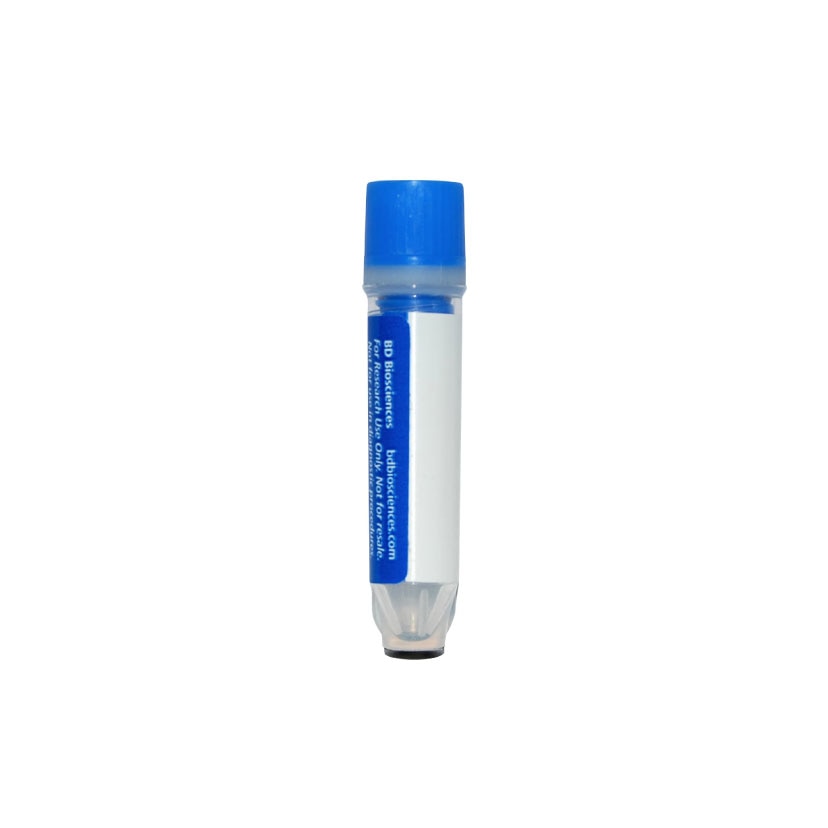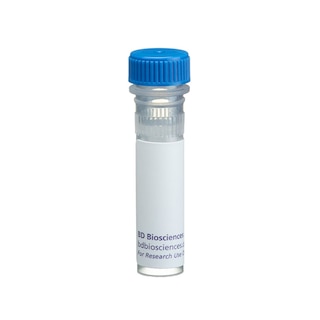-
Reagents
- Flow Cytometry Reagents
-
Western Blotting and Molecular Reagents
- Immunoassay Reagents
-
Single-Cell Multiomics Reagents
- BD® OMICS-Guard Sample Preservation Buffer
- BD® AbSeq Assay
- BD® Single-Cell Multiplexing Kit
- BD Rhapsody™ ATAC-Seq Assays
- BD Rhapsody™ Whole Transcriptome Analysis (WTA) Amplification Kit
- BD Rhapsody™ TCR/BCR Next Multiomic Assays
- BD Rhapsody™ Targeted mRNA Kits
- BD Rhapsody™ Accessory Kits
- BD® OMICS-One Protein Panels
-
Functional Assays
-
Microscopy and Imaging Reagents
-
Cell Preparation and Separation Reagents
-
- BD® OMICS-Guard Sample Preservation Buffer
- BD® AbSeq Assay
- BD® Single-Cell Multiplexing Kit
- BD Rhapsody™ ATAC-Seq Assays
- BD Rhapsody™ Whole Transcriptome Analysis (WTA) Amplification Kit
- BD Rhapsody™ TCR/BCR Next Multiomic Assays
- BD Rhapsody™ Targeted mRNA Kits
- BD Rhapsody™ Accessory Kits
- BD® OMICS-One Protein Panels
- Switzerland (English)
-
Change country/language
Old Browser
This page has been recently translated and is available in French now.
Looks like you're visiting us from United States.
Would you like to stay on the current country site or be switched to your country?
BD® AbSeq Oligo Mouse Anti-Biotin
Clone BK-1/39 (RUO)


Regulatory Status Legend
Any use of products other than the permitted use without the express written authorization of Becton, Dickinson and Company is strictly prohibited.
Preparation And Storage
Recommended Assay Procedures
Put all BD® AbSeq Reagents to be pooled into a Latch Rack for 500 µL Tubes (Thermo Fisher Scientific Cat. No. 4900). Arrange the tubes so that they can be easily uncapped and re-capped with an 8-Channel Screw Cap Tube Capper (Thermo Fisher Scientific Cat. No. 4105MAT) and the reagents aliquoted with a multi-channel pipette. BD® AbSeq tubes should be centrifuged for = 30 seconds at 400 × g to ensure removal of any contents in the cap/tube threads prior to the first opening.
Definitions:
Primary antibody: Antibody directly binds to target protein epitope
Secondary antibody: This antibody binds to primary antibody
Because the target for this antibody can vary depending on the primary target, it is recommended to optimize the antibody concentration before use by following the Flow Cytometry Analysis of BD™ AbSeq Ab-Oligo and Sample Tag Expression Protocol (Doc ID: 232502 Rev. 2.0. see https://www.bdbiosciences.com/content/dam/bdb/marketing-documents/BD-AbSeq-Ab-Oligo-Flow-Cytometry-Analysis-User-Guide.pdf). The starting concentration for this antibody is 0.5 µg/µL and dilution may be necessary to maximize signal to noise because the antibody amount depends on the concentration of the primary antibody.
Staining Protocol
1) (Optional) Treat cells with Fc Block
a. Make Fc Block mix by combining 114 µL BD Pharmingen™ Stain Buffer (FBS) with 6 µL BD Human or Mouse Fc Block (PN 564220 or 553142, respectively) and mix thoroughly by pipetting.
b. Pellet cells by centrifuging at 400 x g for 5 minutes. Decant supernatant.
c. Add 110 µL Fc Block mix to cell pellet
d. Incubate cells at room temperature for 10 minutes.
2) Stain with primary antibody
a. Make primary antibody mix by combining optimal volume of primary antibody (see primary antibody product technical data sheet) with 98 µL BD Pharmingen™ Stain Buffer (FBS) and mix thoroughly by pipetting.
b. Transfer 100 µL of cell-containing suspension to primary antibody mix, for a total staining volume of 200 µL.
c. Incubate for 30-60 minutes on ice.
d. (Note: During this incubation it is recommended to pool the secondary AbSeq antibody with any additional AbSeq to be included in the assay. See one of the BD Rhapsody System Single-Cell Labeling with the BD® AbSeq Ab-Oligos protocols listed in step 3a for guidance).
e. Add 2 mL BD Pharmingen™ Stain Buffer (FBS) and mix gently by pipetting, avoiding bubbles.
f. Pellet cells by centrifuging at 400 x g for 5 minutes. Decant supernatant.
g. Repeat steps d-e 2x for a total of 3 washes.
h. After the third wash, suspend cells in 100 µL BD Pharmingen™ Stain Buffer (FBS).
3) Stain with secondary antibody
a. Stain cells with the AbSeq pool prepared during the incubation step C, referring to one of the AbSeq protocols below as needed.
• Single-Cell Labeling with BD® AbSeq Ab-Oligos (41 to 100 plex) (Doc ID: 23-22314)
• Single Cell Labelling with BD® Single-Cell Multiplexing Kits and BD® AbSeq Ab-Oligos (1 to 40 plex) (Doc ID:23-21339)
• Single-Cell Labeling with BD® Single-Cell Multiplexing Kits and BD® AbSeq Ab-Oligos (41 to 100 plex) (Doc ID: 23-22354)
• Single-Cell Labeling with BD® Flex Single-Cell Multiplexing Kits and BD® AbSeq Ab-Oligos (1 plex to 100 plex) (Doc ID:23-24312)
Sequencing reference files can be made using the BD® AbSeq Panel Reference Generator (https://abseq-ref-gen.genomics.bd.com/).
Use standard laboratory safety protocols. Read and understand the safety data sheets (SDSs) before handling chemicals. To obtain SDSs, go to regdocs.bd.com or contact BD Biosciences technical support at scomix@bdscomix.bd.com.
Warning: All biological specimens and materials contacting them are considered biohazardous. Handle as if capable of transmitting infection and dispose of with proper precautions in accordance with federal, state, and local regulations. Never pipette by mouth. Wear suitable protective clothing, eyewear, and gloves.
Product Notices
- Please refer to https://www.bdbiosciences.com/en-us/resources/protocols/single-cell-multiomics for technical protocols.
- This reagent has been pre-diluted for use at the recommended volume per test. Typical use is 2 μl for 1 × 10^6 cells in a 200-μl staining reaction. For best results, close caps securely after use and before storage.
- Source of all serum proteins is from USDA inspected abattoirs located in the United States.
- Caution: Sodium azide yields highly toxic hydrazoic acid under acidic conditions. Dilute azide compounds in running water before discarding to avoid accumulation of potentially explosive deposits in plumbing. Follow state and local guidelines when disposing of hazardous waste.
- The production process underwent stringent testing and validation to assure that it generates a high-quality conjugate with consistent performance and specific binding activity. However, verification testing has not been performed on all conjugate lots.
- Please refer to http://regdocs.bd.com to access safety data sheets (SDS).
- For U.S. patents that may apply, see bd.com/patents.
Data Sheets
Recently Viewed
The BK-1/39 monoclonal antibody specifically recognizes biotin. Biotin is a water-soluble B complex vitamin that functions as a coenzyme which is required for the cellular metabolism of proteins and fats and the production of fatty acids. Although required by all organisms, biotin synthesis is limited to bacteria, yeasts, molds, algae, and some plants. Biotin is also useful for tagging molecules such as nucleic acids or proteins including antibodies. The BK-1/39 antibody can used to detect biotinylated target molecules and antibodies especially when signal amplification is desired. Fluorescent BK-1/39 antibody conjugates can provide a useful alternative to fluorescent avidin conjugates in order to minimize background staining and maximize signal intensity.
The antibody was conjugated to an oligonucleotide that contains an antibody clone-specific barcode (ABC) flanked by a poly-A tail on the 3' end and a PCR handle (PCR primer binding site) on the 5' end. The ABC for this antibody was designed to be used with other BD® AbSeq oligonucleotides conjugated to other antibodies. All AbSeq ABC sequences were selected in silico to be unique from human and mouse genomes, have low predicted secondary structure, and have high Hamming distance within the BD® AbSeq portfolio, to allow for sequencing error correction and unique mapping. The poly-A tail of the oligonucleotide allows the ABC to be captured by the BD Rhapsody™ system. The 5' PCR handle allows for efficient sequencing library generation for various sequencing platforms.
NOTE: The BD Rhapsody™ Single-Cell Analysis System must be used with the BD Rhapsody™ Express Instrument or BD Rhapsody™ HT Xpress Instrument.
Development References (4)
-
Levit-Zerdoun E, Becker M, Pohlmeyer R, et al. Survival of Igα-Deficient Mature B Cells Requires BAFF-R Function.. J Immunol. 2016; 196(5):2348-60. (Clone-specific: Flow cytometry). View Reference
-
Mavrangelos C, Swart B, Nobbs S, Nicholson IC, Macardle PJ, Zola H. Detection of low-abundance membrane markers by immunofluorescence--a comparison of alternative high-sensitivity methods and reagents.. J Immunol Methods. 2004; 289(1-2):169-78. (Methodology: Flow cytometry). View Reference
-
Pishesha N, Bilate AM, Wibowo MC, et al. Engineered erythrocytes covalently linked to antigenic peptides can protect against autoimmune disease.. Proc Natl Acad Sci U S A. 2017; 114(12):3157-3162. (Clone-specific: Flow cytometry). View Reference
-
Zempleni J, Wijeratne SS, Hassan YI. Biotin.. Biofactors. 2009; 35(1):36-46. (Biology). View Reference
Please refer to Support Documents for Quality Certificates
Global - Refer to manufacturer's instructions for use and related User Manuals and Technical data sheets before using this products as described
Comparisons, where applicable, are made against older BD Technology, manual methods or are general performance claims. Comparisons are not made against non-BD technologies, unless otherwise noted.
For Research Use Only. Not for use in diagnostic or therapeutic procedures.
